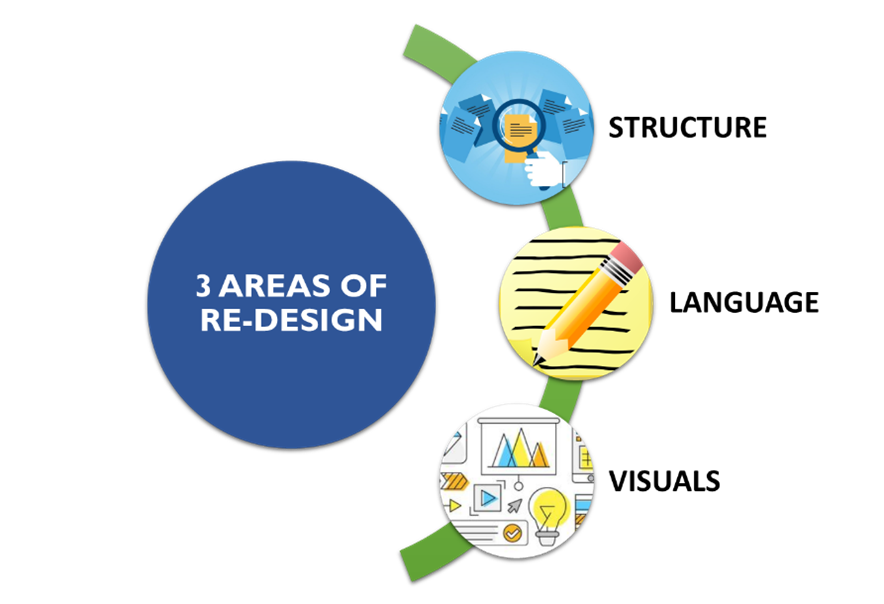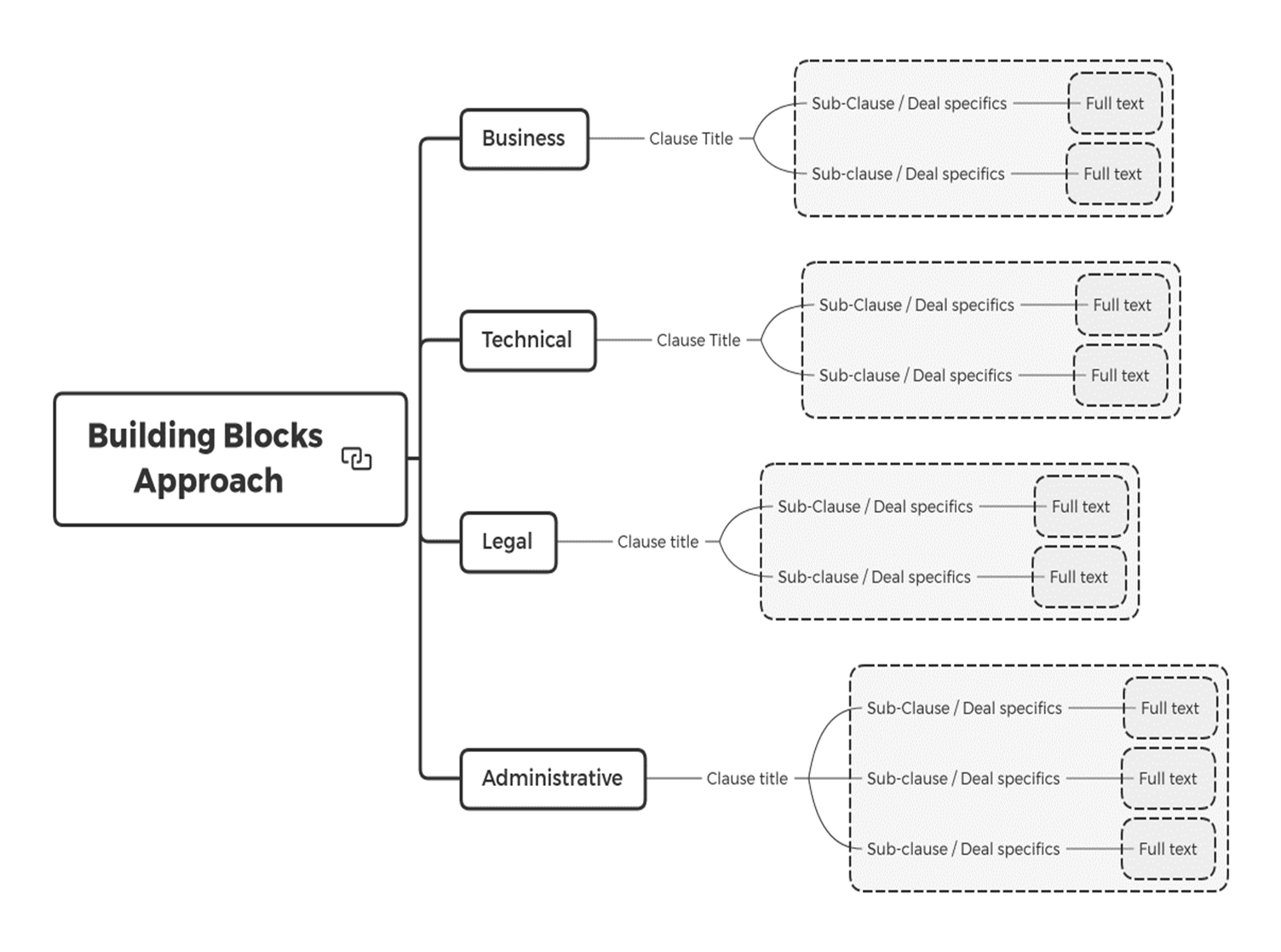We all know that contract language has never been user-friendly and, yet we seem to be slow at fixing the problem even though we also know how businesses spend extensive time and money on contract negotiations, drafting, and reviewing.[1] And it’s no mystery -- although contracts are a vital part of business-to-business (B2B) exchanges and guide the exchange relationship, we keep trudging through complicated and laborious text. This article focuses on one method for fixing this, and the operative phrase is design thinking.
The primary benefit of design thinking is flexibility. You can integrate it into any business, legal, or contract activity. That’s why design thinking in business is emerging in operational management, especially to improve and optimize user experience for economic gains. And that’s why design thinking offers three more benefits:
- opens the door to explore how to meet people’s needs best;
- focuses on producing functional products,
- encourages a problem-solving process we can use to create and find real-world solutions to problems.[1]
Built on design thinking, the user-centered contract design process involves a mindset that has evolved from shifting away from considering design purely as a process but, instead, as a way of thinking to solve complex problems.[2]
Legal design is storming the world
Black and white text documents still dominate the legal field, which has been slow to design contract documents that are visually aesthetic and user-friendly. In contrast, many other fields have embraced this trend, such as technology and consumer products.
Legal design or human-centered design focuses on making the law accessible for all. Human-centered design and legal design applies design thinking principles, having a fundamental focus on the user experience, employing a process of testing solutions in an iterative process.[3]
In their newly released book titled The Legal Design Book, [4] Astrid Kohlmeier and Meera Klemola define legal design as “…deployed in the field of law to transform legal products, services, work, systems, business strategies, ecosystems, and user experience.” They further illustrate how legal design can bring efficiencies well beyond just the user-friendliness of a document.
Contract design shares the same principles as legal design except contract design focuses on the intended audience and assumes that not every person necessitates every part of a contract. The design is tailored instead to the users’ or stakeholders’ specific roles and the information they rely on to perform their jobs.
The user-centered design process
I first introduced this four-phased, user-centered design process (Figure 1) in my book titled User-centered design: A key to contract simplification.6 It guides the user to develop a contract with a reader-first mindset.
- The first phase focuses on what the contracting parties intend to achieve and the context of the business deal.
- The second phase explores in detail who are the contract users and stakeholders.
- Once the context and users are defined, the design process can begin.
- The fourth phase is user-testing.
Applying information, communication, and graphic design methods, common in other fields helps simplify complex documents. Visuals such as graphs, flow charts, swim lanes, etc., are excellent ways to communicate information to a diverse audience.
A key element in any design process is reviewing and evaluating whether the new solution improved the communication and, if it did not, the process is repeated until it works. Contract design, as with legal design, is a trial-and-error process. It is ok to fail and try again!

Figure 1. User-centered design process
Contract redesign
If you focus on shifting away from the traditional black and white, text-only contract, you can consider three distinct design areas:
- structure,
- language, and
- visualization (Figure 2.).
As you design your contract, you can use various techniques and tools to harmonize these three areas to create one holistic, simplified contract. The aim is to structure the content to be intuitive to navigate, tailor the language to the audience, and incorporate visuals (images) to effectively communicate the information to the intended audience.

Milva Finnegan©
Figure 2. Three areas of contract design
First, simplify your contract structure
As mentioned, contracts are undesirable to read because their continuous, intensive text streams resembling a novel without clear headings, breaks, or common systematic structure. That’s why simplifying the contract structure focuses first on clause structure and flow.
Contract structure views contracts as many core concepts which I call the building blocks of a contract. Layering contract information from a macro level consisting of headings to a micro level with detailed text allows the document to be logically organized and easy to navigate (Figure 3.) In addition, using numbering, paragraph breaks, bullets, white space, and other page layout options helps the reader skim read the document quickly when looking for specific information.
Furthermore, grouping the building blocks into main user groups such as technical, business, legal and administrative, provides a high-level user outline.

Figure 3. Building blocks relational concept map
To break down the huge task of developing a new contract, you can use these building blocks to eliminate the ill-advised habit of copying and pasting an old document and editing it to create a new contract. This process also allows you to guide users directly to specific parts of the contract that relate to their areas of responsibility and expertise.
Second, simplify your language
Contract simplification aligns with the plain language goals that strive for “communication whose language, structure, and design are so clear that the intended audience can easily find what they need, understand what they find, and use that information.[1]”
The audience, purpose, and context of the information are central to how the drafter approaches contract writing. Table 1 aligns the plain language principles to user-centered design goals to illustrate how plain language goals also align to user-centered design. You can use these to ensure the communication is applicable, intuitive, understandable, and usable for the reader.
|
Plain Language
|
User-Centered Design
|
|
The reader gets what they need or want.
|
Applicable
|
|
The reader can easily find the content they need
|
Intuitive
|
|
The readers can easily understand the content they find
|
Understandable
|
|
The readers can easily use the content.
|
Usable
|
Table 1. Contract language simplification
Third, simplify your visuals – select the right type of visuals
Steven Weise said this to the legal community in 1999: “Words cannot do the entire job — lawyers need to find those crayons that they put away many years ago and learn how to draw again.”[2] He emphasizes that visualization is about visual graphic depictions, not just pictures. So, to enhance the clarity of writing consider different visual design techniques.
Simple line effect, boxes, color coding, and icons -- among other things -- are all part of visual design. By starting to sketch you can make abstract concepts visible.[3] To determine the right type of visual it is beneficial to categorize the information type, content, and users to summarize the extensive amount of information into manageable datasets.[4]
|
Information Type
|
Content
|
Users / Stakeholders
|
Example Visuals
|
|
Data Visualization
|
Quantitative Data
Categorized Data
|
Program Management
Business Management
Accounting Team
|
Bar Charts
Line Graphs
Tables
Pie Charts
Drawings
|
|
Process Visualization
|
Sequential Information/Tasks
Specific Tasks
|
Logistics Team
Technical Team
Management Team
|
Delivery Diagrams
Flow charts
Swim lanes
|
|
Text Visualization
|
Technical terminology
Titles & Headings
Terms of Art
|
Legal Team
Contract Management
Compliance
Audit Team
|
Numbering
Icons
Color Coding
Typography
Layout
|
Table 2. General visualization categories
In Table 2, the relationship between the information type, content, and users helps you consider which visual to use. Contracts are multi-user documents and identifying the users and stakeholders prior to starting the design allows for a collaboration approach to truly develop a user-centered contract.
Discover the value proposition
In contracting, you can solve the complexity problem by following a user-centered design process to produce simplified contract documents. A well-designed contract that serves as a roadmap throughout execution provides contract management efficiencies, helps avoid disputes, and ultimately creates economic value to a business. To achieve this, incorporate design thinking into your contract development process to make your document readable, comprehensible, and usable for the intended audience. Engaging multiple users with different backgrounds in a creative environment changes the contract development process into a collaborative problem-solving process.
END NOTES
- Finnegan, M. (2021). User-centered design: A key to contract simplification. Dissertation, University of Vaasa. https://urn.fi/URN:ISBN:978-952-476-952-5
- Kolko, J. (2015, September). Design thinking comes of age. Harvard Business Review. https://hbr.org/2015/09/design-thinking-comes-of-age
- Brown, T. (2019). Change by design (Rev. ed.). HarperCollins Publishers.
- Hagan, M. (2018). A human-centered design approach to justice: Generating new prototypes and hypotheses for intervention to make courts user-friendly. Indiana Journal of Law and Social Equality, 6(2), article 2, 200-239.
- Kohlmeier, A. & Klemola, M. (2021): The Legal Design Book.
- International Plain Language Federation (IPLF) standards committee is the body developing an ISO plain language standard (Refer also An ISO Plain Language Standard 20 September 2020.
- Weise, S. (1999, May/June). Get your crayons out. American Bar Association - Business Law Today.
- Mitchell, J. (2017). Drawing Pictures in Legal Practice and Transactional Teaching. Stanford Law School.
- Finnegan (2021)
ABOUT THE AUTHOR
Milva Finnegan recently completed her doctorate degree in Economics in business law at the University of Vaasa in Finland. Her research focuses on merging contract law and contract design to produce simplified and usable contracts that all users can understand. Milva has been a practitioner in the field for 20+ years, she currently runs a contract consulting company, Karhu, LLC, located in St. Louis, Missouri, USA. Her company helps clients with; implementing contract management best practices and processes, integrating electronic Contract Lifecycle Management (CLM) systems and provides training and teaching workshops on how to re-design and simplify contracts documents. Prior to starting her own company Milva worked at The Boeing Company over 12 years in both contracts and finance disciplines on various multi-million-dollar plus government and commercial programs. Follow her on LinkedIn: https://www.linkedin.com/in/milva-finnegan-89065376/
To learn more about contract design visit karhuconsulting.com or to read the entire dissertation go online to University of Vaasa publications at: https://osuva.uwasa.fi/handle/10024/12480